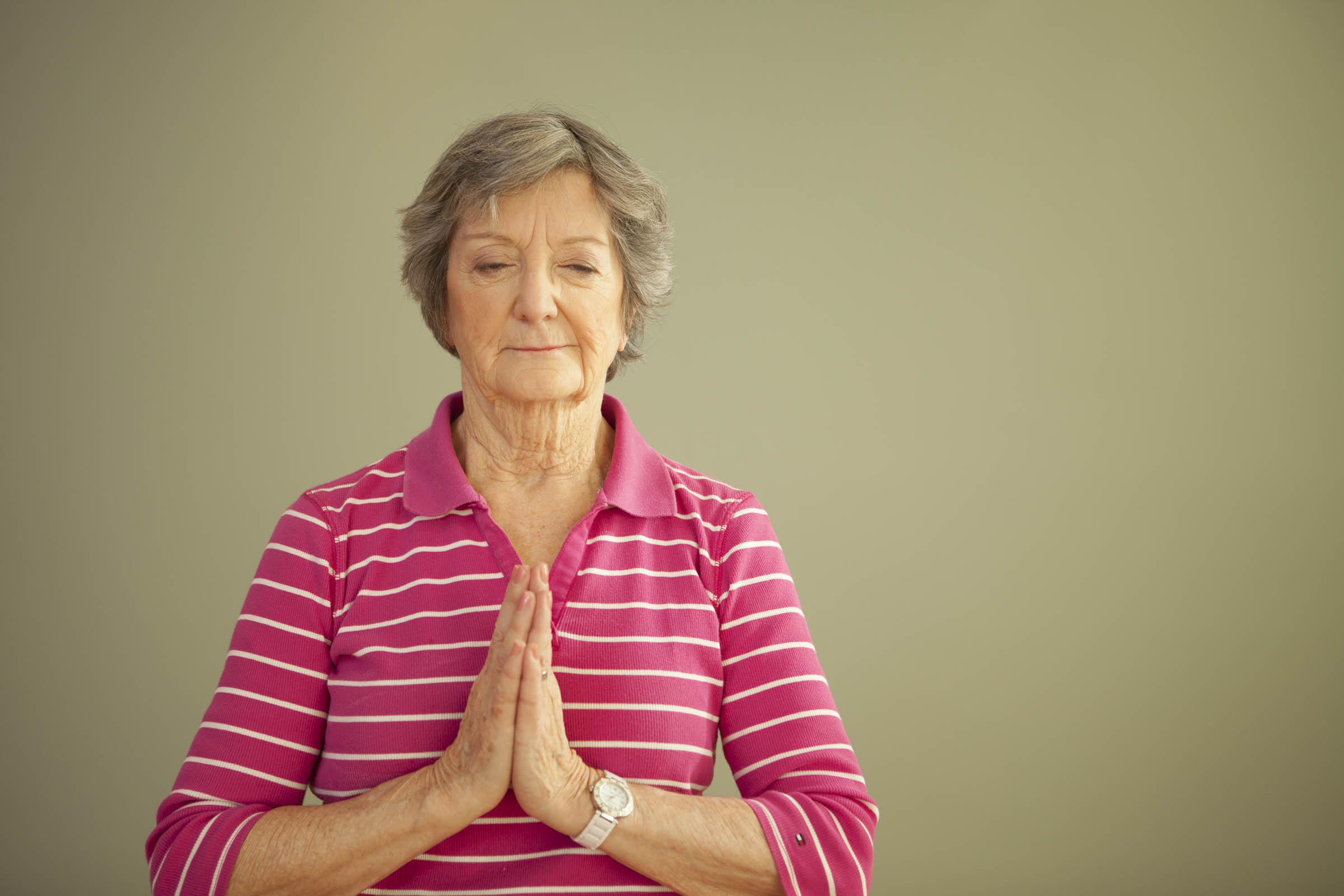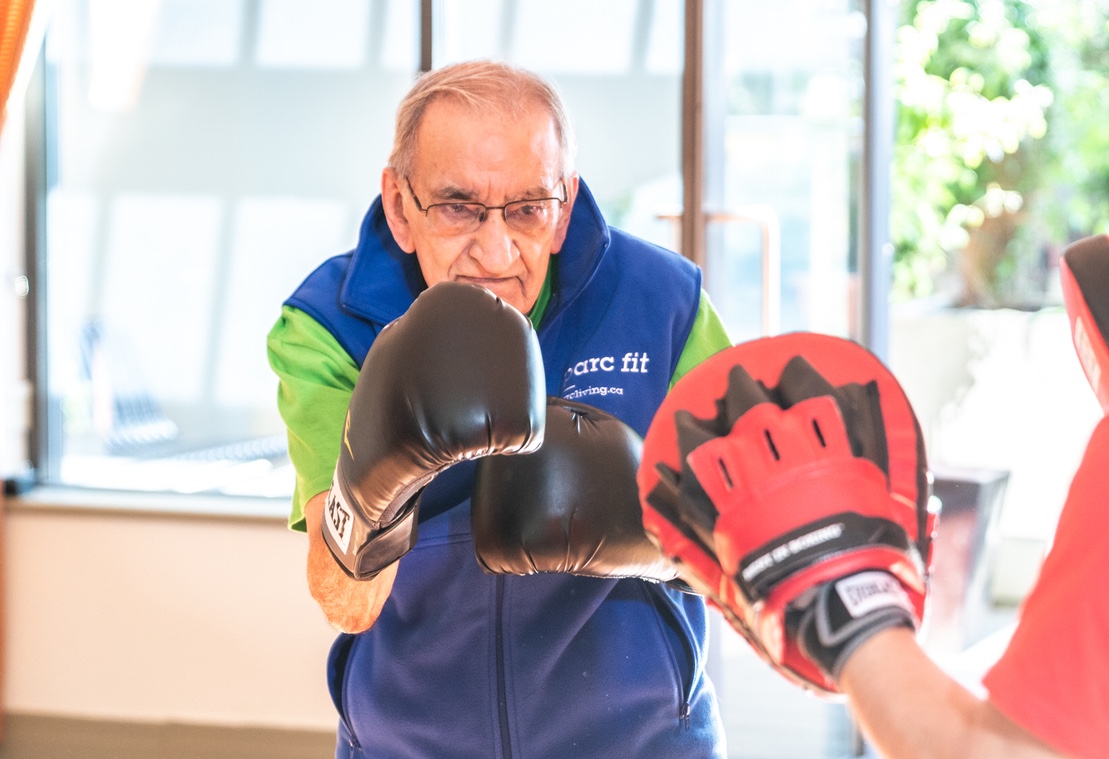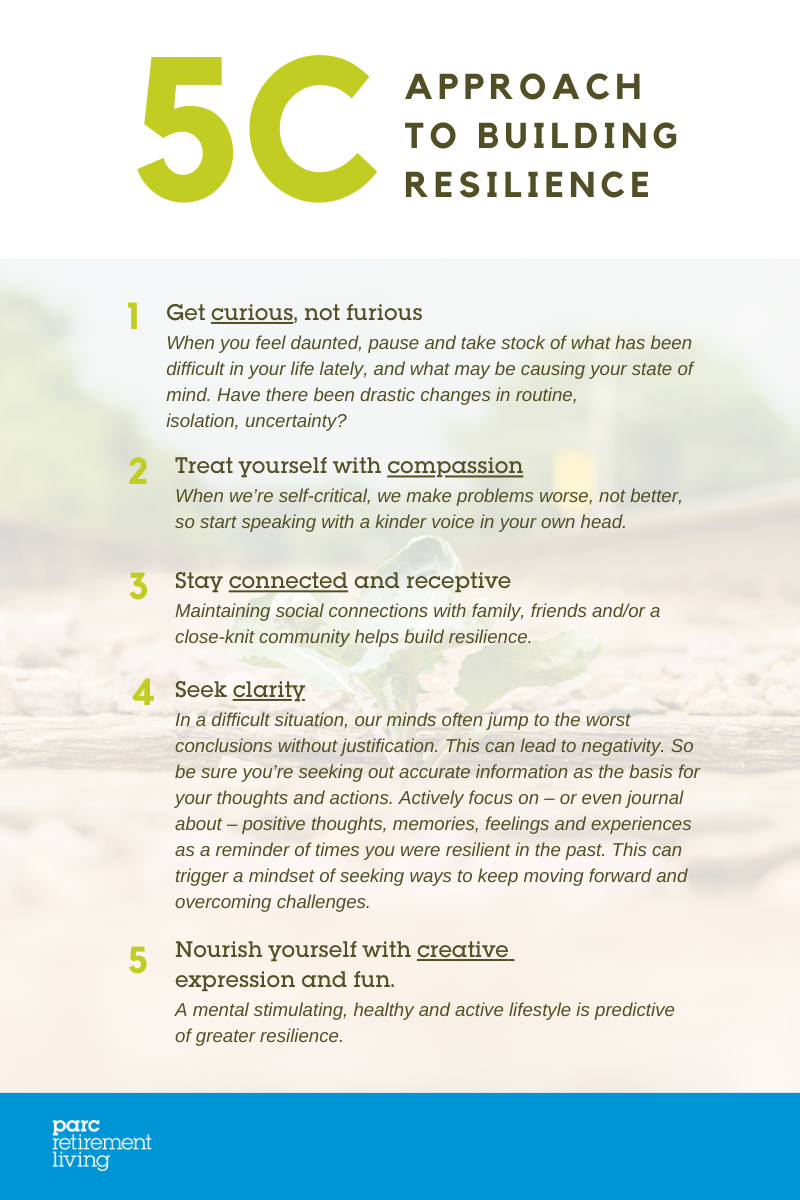How PARC’s Seniors Are Becoming Stronger and More Resilient
in Active AgingWritten by PARC Retirement Living

Resilience is the ability to adapt and rebound from life’s challenges. It’s one of the keys to creating a life complete with joy, hope and possibilities. And while some people seem to be born with it – bouncing back from tragedy, overcoming obstacles and moving forward no matter what – the rest of us may need a little help.
This is where Registered Clinical Counsellor, Deborah Braun comes in. For more than 15 years, she has been helping all kinds of clients, from students to high-level executives and hospital administrators, “chart a path towards a more desirable future,” integrating traditional therapies with leading-edge neuro-psychology exercises. That includes coaching on resilience.
As part of the PARC Retirement Living virtual speaker series, Deborah recently gave a webinar called “Light the Pathway,” all about building resilience. She mentions two main types of resilience: physical and psychological. Physical resilience is the ability to withstand and recover from health issues. Psychological resilience refers to a person’s ability to adapt in the face of adversity, trauma, tragedy, or other significant sources of stress. Both are key to a happy and fulfilling life. So how do we cultivate them?
Here, we talk to Deborah about the nature of resilience, and how to strengthen our ability to adapt and rebound, no matter what kind of obstacle we’re facing.
Q: Is resilience something anybody can develop and nurture?
A: Yes, it’s definitely something we can grow and strengthen. I sometimes compare it to physical exercise: the more often you do it, the more quickly your heart rate returns to normal each time. With resilience, the question is, how quickly do you adapt when life presents challenges, like the COVID-19 pandemic for example? How long does it take for you to feel yourself again, and enjoy yourself in ways that you used to?
Q: What is your advice to somebody who wants to become more resilient?
A: I think the first step is to be gentle with ourselves. If we’re hard on ourselves in a difficult situation, it magnifies and amplifies the problem, as opposed to making it more manageable. Instead of being self-critical, or impatient with yourself, you want to say, “Hey, wait a minute. How do I really want to treat myself here? What would be a nicer approach than this angry voice?”

Q: Is it harder for older adults to be resilient? If so, why?
A: Many older people are quite resilient. But I would say it can sometimes be hard to remember our resilience as we age. As we get older, we are more tender. Things hit us more. If we focus on the things we can’t do, or the negative, it’s difficult to notice our own resilience. When we notice the positives, or the times when we respond well to something difficult, it’s very encouraging. That’s why it’s important to pause and recognize self-critique, and then be kind to ourselves.
Q: Are there other ways to maintain a positive outlook?
A: One technique I recommend when times are tough is to think about a person you know who is coping well. We can learn a lot from “resilience role models.” Just knowing other people are doing OK means it is possible, and we can be encouraged by that. Another method is to reframe each problem into a learning or growth opportunity. In any challenging situation, there is a chance to learn something different. Ask yourself, what is the opportunity in disguise here? I may not like the gift wrap, but what’s the gift inside? Within the struggle, we can say to ourselves, “I don’t like how I’m being forced to adapt here, but what might be good for me about this? What might be good for other people? How might I try something different that is going to be productive or healthier for me?”

Q: Is that the meaning behind your webinar title “Light the Pathway” – setting a brighter, positive path instead of a dark or negative one?
A: Exactly. We can very much influence which pathways we take. As humans, we are very habitual, as are our brains. The brain is so focused on flight, fight or freeze, and trying to save us energy all the time. It switches us automatically into habits; patterns it already knows. When we’re able to pause, take a breath, be kind to ourselves and recognize that other people are doing OK, we can start to direct our minds to ways we want to be thinking.
Q: What are some specific steps or tools people can use to build resilience?
A: I often frame it as the “5C” approach:
Q: All of these things help build psychological resilience. Would you say physical resilience is equally important, especially for seniors?
A: Absolutely! Physical resilience is really powerful. When we’re physically active, we shift our mindset and our ability to respond. Physical activity triggers all sorts of wonderful feelings and the production of serotonin (the happiness chemical) in the brain, which makes us feel lighter and more positive, translating to broader perspective. And in turn, the way we feel about things affects our physical well-being in a big way.
Want to learn more? Tune in to PARC’s Virtual Wellness Webinar Series – Pathways Back Toward Calm on our YouTube channel. Don’t forget to subscribe to our channel and visit our blog for more helpful content.
- Light the Pathway – Deborah Braun, M.A., RCC
- Extend the Light – Dr. Gloria McArter, Ph.D., RCC
- Reroute Anxiety – Deborah Braun, M.A., RCC
- Make Friends with Anger – Dale Trimble, M.A., RCC
- Lift Relationship Distress – Jo-Anne Weiler, M.A., RCC
This information is not intended as medical advice, and should not replace a one-on-one relationship with a qualified healthcare professional.



